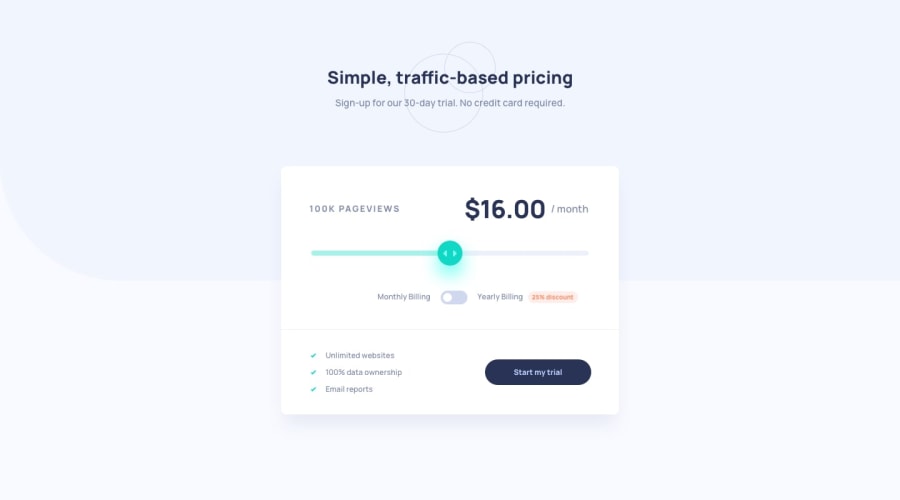
Design comparison
Solution retrospective
I am most proud of the interactive slider tool and toggle button functionality.
Next time, I would work more on the layout and mobile responsiveness early on.
What challenges did you encounter, and how did you overcome them?-
TailwindCSS Content Configuration: Initially, my
tailwind.config.jsfile had an empty content array, which led to no styles being generated. Tailwind relies on this array to scan files for class names. By including paths to all relevant HTML, JavaScript, and JSX files, I ensured Tailwind could effectively generate the necessary styles. -
Custom Colors in Tailwind: The project required the use of specific custom colors. I learned to extend the Tailwind configuration under the
themesection to include these colors. This allowed me to use the custom colors throughout the project by referencing their keys, seamlessly integrating the design's color scheme. -
Positioning Techniques: This project deepened my understanding of relative and absolute positioning, especially for layering images such as the background and pattern circles. Setting a container to relative positioning provides a reference point for absolutely positioned elements within it, facilitating layout control.
-
Using Images as List Item Markers: TailwindCSS doesn't directly support dynamic values in class names, which posed a challenge when trying to use an image as a list item marker. I overcame this by defining a custom class in my global CSS file and applying it within my JSX, showcasing the flexibility of combining Tailwind with custom CSS for unique requirements.
-
Building an Interactive Slider: Prior to this project, I had no experience with interactive sliders. I learned about managing the slider's state to reflect its current value and implemented an
onChangeevent handler to update this state whenever the slider's value changed. Ensuring the input's type was set torangewas crucial for the slider functionality. -
Extending Font Sizes in Tailwind: Tailwind's predefined font sizes didn't include one small enough for a specific design requirement. I extended the Tailwind configuration to include a custom
xxsfont size, demonstrating the ease of customizing Tailwind to fit project-specific needs. -
Enhancing Button Interactivity with Hover States: Adding a hover state to the "Start My Trial" button reinforced the importance of interactive elements in UI design. By utilizing Tailwind's
hover:prefix, I was able to create a visually responsive button that enhances user experience.
I was unable to figure out how to change the range slider icon to the svg provided. I would love someone's guidance on how to do that.
Community feedback
Please log in to post a comment
Log in with GitHubJoin our Discord community
Join thousands of Frontend Mentor community members taking the challenges, sharing resources, helping each other, and chatting about all things front-end!
Join our Discord
